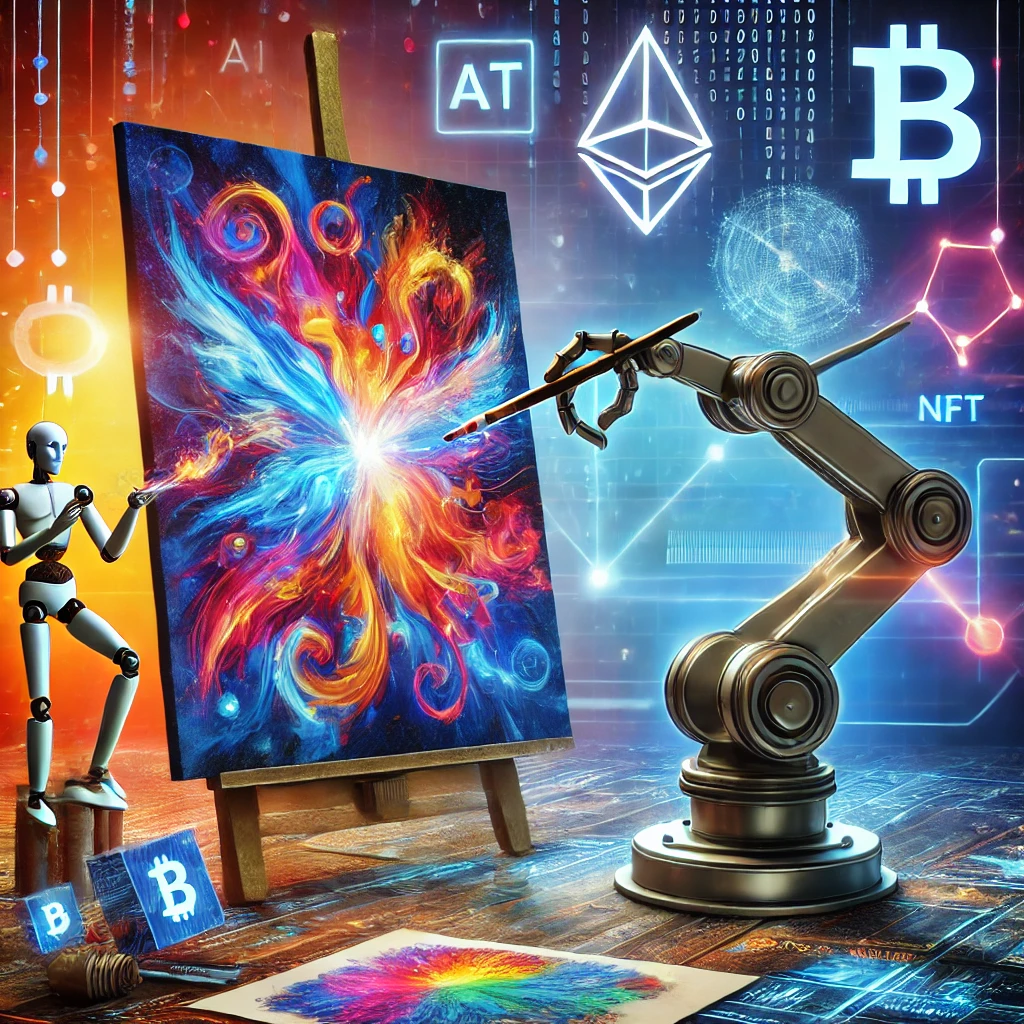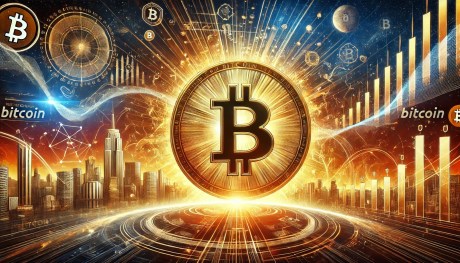AI-generated art involves the use of artificial intelligence, particularly machine learning algorithms, to assist in creating artworks. Artists feed data—such as images, patterns, or even music—into AI models, which then generate new, often unpredictable pieces.
Popular tools like DALL·E, MidJourney, and DeepAI are already empowering artists to expand their creative boundaries. These algorithms can learn and adapt, helping creators produce art that merges human vision with the computational power of AI.
Why AI-Generated Art Fits the NFT Market
1. Exclusivity and Rarity
NFTs thrive on the concept of rarity. Each AI-generated piece is inherently unique due to the unpredictable nature of the algorithms. This aligns perfectly with the NFT market’s appetite for one-of-a-kind assets.
2. Fusion of Art and Technology
The NFT space is built on innovation, and AI-generated art embodies this ethos. It offers a fresh perspective on creativity, pushing boundaries and challenging traditional notions of authorship.
3. Broadening Accessibility
AI tools democratize art creation, enabling individuals without traditional artistic training to produce and sell high-quality digital works. This inclusivity has the potential to expand the NFT creator base significantly.
AI-Generated NFTs in Action
Platforms like Art Blocks and fxhash are already leveraging generative art as a focal point. These platforms allow creators to mint AI-generated artworks directly onto blockchain networks, providing collectors with access to truly original digital assets.
For example:
- Art Blocks specializes in generative art NFTs, where the final artwork is determined by an algorithm and minted on demand.
- GANpaint Studio utilizes generative adversarial networks (GANs) to produce hyper-realistic or abstract digital paintings.
This blend of AI and blockchain ensures that the art is not only unique but also immutable and verifiable.
What’s Driving the Popularity of AI-Generated Art?
Innovation in Creativity
Artists are finding new ways to push the boundaries of their work. By collaborating with AI, they’re able to experiment with forms, textures, and concepts that were previously unattainable.
Growing Collector Interest
Collectors are constantly seeking new and innovative pieces. AI-generated NFTs tap into this desire for fresh, groundbreaking art while offering the exclusivity that collectors crave.
Sustainability
AI-generated art is also aligning with the global push toward sustainability. By reducing the need for physical resources, it minimizes the environmental footprint of traditional art creation.
Challenges for AI-Generated NFTs
Questions of Authorship
Who owns the credit for an AI-generated artwork—the machine, the artist, or the programmer? This remains a complex and often debated topic.
Market Saturation
As more creators adopt AI, the NFT market may face an oversupply of generative art. This could dilute its novelty and impact.
Regulation and Copyright Issues
Legal frameworks around AI-generated content are still evolving. Ensuring fair attribution and protection for creators will be essential for long-term success.
The Future of AI-Generated Art in NFTs
The rise of AI-generated art is a natural evolution for the NFT market. As this genre grows, we’re likely to see:
- Collaborations between AI and renowned artists to produce hybrid works.
- Increased use of AI-generated art in virtual spaces, such as the metaverse.
- Advancements in AI algorithms that allow for even more sophisticated and diverse creative outputs.
This trend signifies a new era for both art and technology, blending human ingenuity with artificial intelligence to craft works that captivate, provoke, and inspire.




